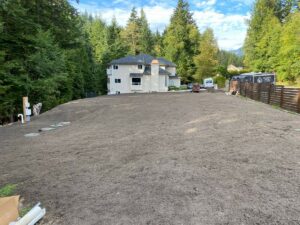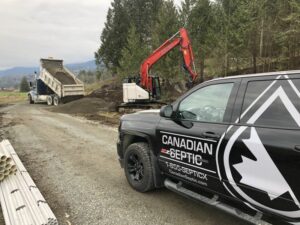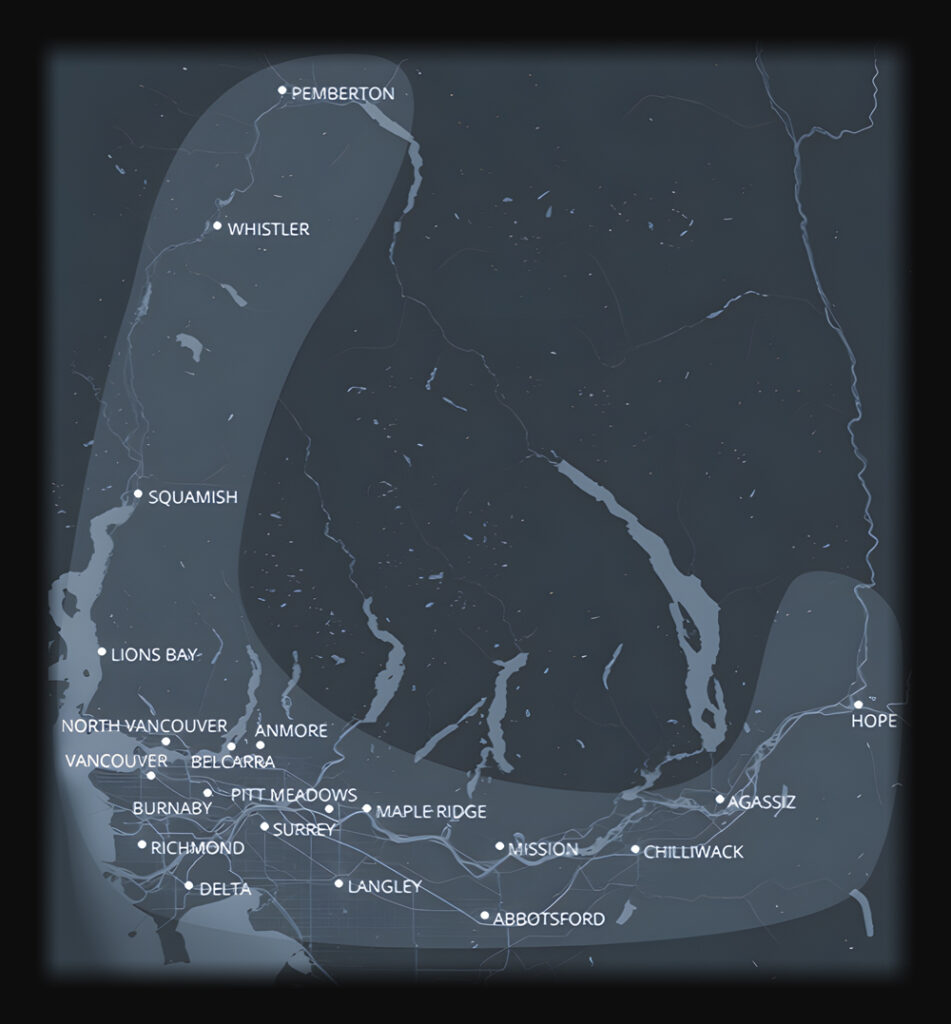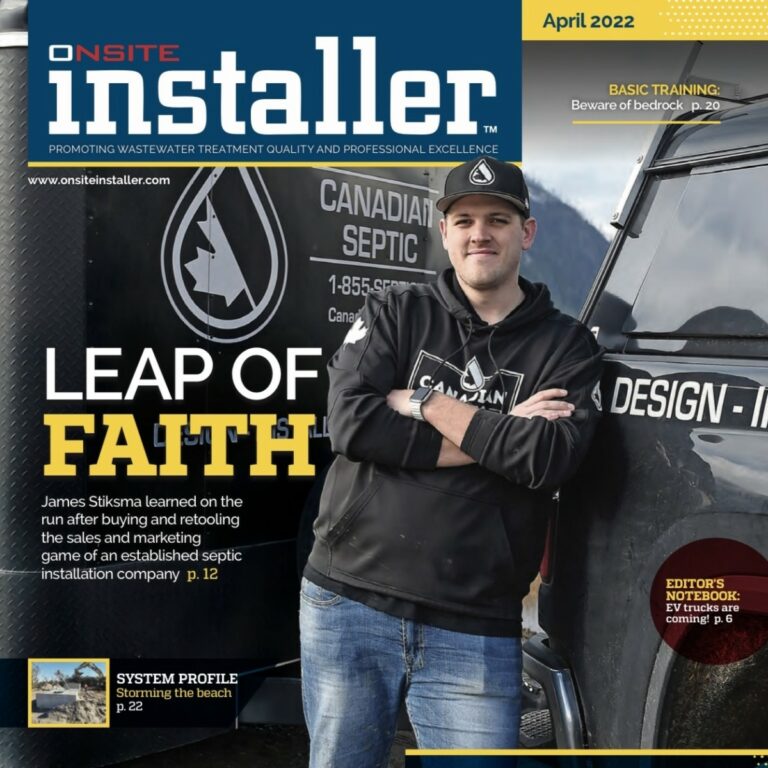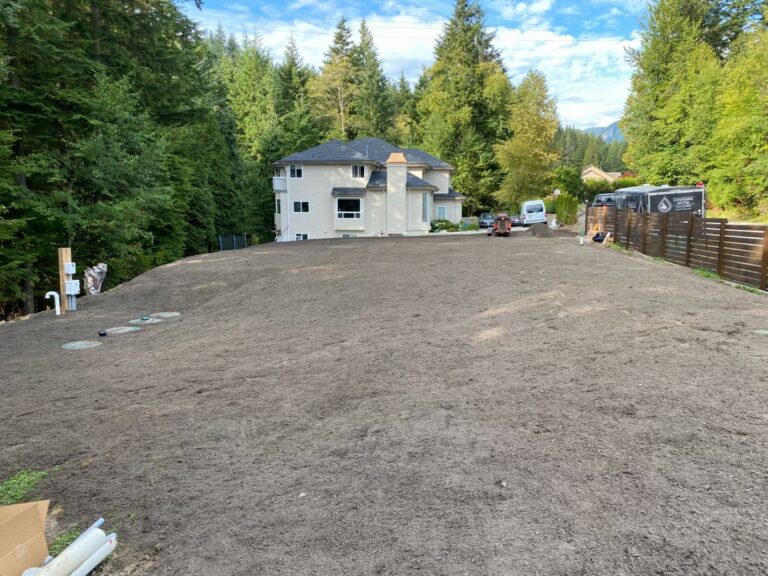The Fraser Valley of British Columbia has topography that makes it very challenging to design and install a septic system.
One thing many rural properties have in common is a lack of municipal lot line services. You can usually be assured that your new property will be able to tie into the hydro grid, and that a road of some type will be provided to your driveway, but tap water and sewage disposal is often considered to be the responsibility of the individual property owner. This raises some interesting design criteria, as you are being asked to draw your drinking water up from the reserves below your property, while also disposing of your waste in to the same reserves. Clearly great care must be taken to ensure that the waste water draining down does not contaminate the drinking water coming up.
This is one reason why, when shopping for quotes for a new septic system the prices can vary so widely. It can be simple and cheap to install a septic system that disposes of the waste water. But a septic system planner or designer must gives equal weight to the treatment of the waste water and thus the protection of groundwater resources. A contractor’s failure to consider waste water treatment in the interest of landing the job is an ethical breach. If you receive a quote for a new system that seems to be unusually low, it may be a good idea to ask the contractor what the plan was to mitigate contamination concerns. After all, it will be you and your family drinking the well water for years after the septic contractor has been paid and moved on.
A septic system in Agassiz, Chilliwack, Abbotsford, Maple Ridge and other parts of the Fraser Valley for example must often be installed in the flood plain of the Fraser River, and so high seasonal water table plays a part in the design. The river rises dramatically in the spring and often in the fall as well when the rain intensifies. The rising river begins to reclaim its previous territory which is often the depths of gravel and sand underlying much of the Fraser Valley.
As the water table rises, poorly designed trench systems will no longer have a depth of freely draining soil beneath them to act as a filter to trap solids and contaminants as they pass through the soil. The knock on effects are contaminated waste water entering the aquifer, (the treatment component is no longer happening), and in many cases the trenches themselves will begin to fill with groundwater. Many systems with this issue simply will not work for the months when the river is high, and homeowners deal with toilets that will not flush and showers that will not drain. The solution is to wait it out, or to bite the bullet and install a new sand mound.
A septic system in the Fraser Valley or Lower Mainland can be one of many different types. Each system must be tailored to the individual site requirements, but one of the most common is the sand mound. This is pretty much as it sounds; a large mound of sand with some pipes and drain rock on top. Not rocket science in concept, but if it blows apart thanks to poor design or installation it is not very pleasant for anyone involved. Done correctly, the designer will take into account the different drainage characteristics of the mound of sand as well as the underlying soil to ensure the waste water travels downward and not sideways. There is some math involved and many installers are more comfortable having an engineer take on the design to ensure it is done correctly.
If your home is located on the slopes and hillsides in areas such as Sumas Mountain, Majuba Hill, you may also find that a sand mound is the best way forward. On mountain slopes a relatively thin layer of rich organic soil is often underlain by impervious glacial till, which is dense compacted rock and clay deposited when the glaciers rolled through. The effect on a septic system is the same. In wet months the ground water from higher on the mountain will travel downhill on top of the till layer. When the ground water encounters a trench style septic system where one should not have been built, the ground water fills the trenches, and the home again has no effective plumbing until the spring melt is over and the weather improves.
Contact us today to speak to one of our Septic Professionals!
- Send us an email
- Call Toll Free: 1-855-737-8429


